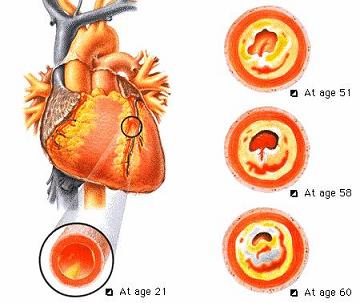Almost all heart attacks occur when a blood clot suddenly and completely blocks a coronary artery. This condition is called a coronary thrombosis, or simply a coronary. The part of the heart muscle nourished by the blocked artery becomes damaged by lack of oxygen. Unless blood flow returns within minutes, muscle damage increases. Heart cells begin to die after four to six hours without blood. The damage can affect the heart's ability to pump and may cause the patient's death. If the clot can be dissolved within four to six hours, damage to the heart can be reduced.
Recovery. Many doctors perform stress tests on patients who have had a heart attack to determine their risk of having another attack or dying suddenly. Patients with abnormal stress tests may be advised to consider angioplasty or bypass surgery. People without complications are sent home for recovery and rehabilitation. Rehabilitation seeks to restore good health through a program that includes gradual increase in exercise and proper diet. The program may also include drugs to control such conditions as high blood pressure and high cholesterol. Most patients can do light work in 30 days. Complete recovery from an attack that leaves thick scars on the heart may take up to three months.
|


